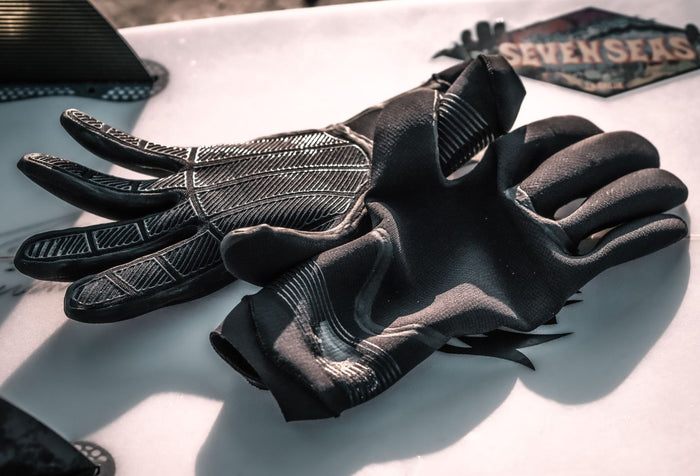Wetsuit & surfing accessories, and when to use them explained


The head is one of the areas of the body where most body heat is lost. It also has a huge influence on your overall perception of temperature. To keep your head comfortable when the water is freezing, you can choose from two wetsuit accessories: a wetsuit hood or a wetsuit cap. Because both of these accessories cover your ears, they also help to prevent surfer’s ears, a condition that often occurs among cold water surfers.
Read more more on the differences between a wetsuit cap and hood below.
A wetsuit cap usually covers just the top of your head and ears. A cap is often attached with a chin strap or simply worn on top of your head like a beanie. Because your neck remains free, you maintain a lot of freedom to move in the water.
Compared to a cap, a wetsuit hood (or hoodie) provides more coverage. In addition to the top of your head and ears, it covers your neck. At O’Neill, we also offer hoods that cover your chin, mouth and nose. Hoods are usually tucked into your wetsuit to seal out water and prevent flushing. Besides hoods that can be bought separately, many premium winter wetsuits have hoods that are attached to the wetsuit.
Overall, a wetsuit hood provides more protection on really cold days, while a cap is easier to put on and off and provides more freedom of movement. Try both and find out which accessory suits you best.
In slightly cooler water, a thin cap or hood can help extend your time in the water without adding too much bulk. When water temperatures get below 14° C (57° F), you can opt for a 1.5mm or 2mm cap or hood. If temperatures dip below 10° C (50° F), a 3mm hood becomes a necessity for most. Keep in mind that these temperatures are just indications – every surfer has his or her own preferences. Besides that, wind and air temperatures also play their part in choosing the right hood or cap.
Wetsuit boots, neoprene boots or surf booties: whatever you call them, these wetsuit accessories are made to keep your feet warm when you paddle out on cold days. Wetsuit boots are available in different grades of thickness and are often finished off with an anti-slip coating to provide the grip that you need on your board. For the coldest of days, there are wetsuit socks that can be worn underneath your booties for added warmth.
Some people wonder if neoprene boots are waterproof, so let us clarify: surf boots work according to the same principle as a regular wetsuit. A thin layer of water is trapped between the neoprene and your skin. This layer is then heated by your body. This means that neoprene boots aren’t waterproof. On the contrary: your feet are always wet.
Just like we said before, the time you start wearing boots and other wetsuit accessories is a matter of personal preference. While some are still surfing in their summer suit, others might opt for a full winter suit with hood, gloves and boots. As a guideline, however, we advise you to bring out your boots when the water temperature dips below 14°C (57 °F). The colder the water gets, the thicker your boots should be. Most standard boots are 3 to 5mm, but there are also 7mm boots for the coldest of days.
Wetsuit gloves are a great way to keep your hands warm. Gloves are often the last wetsuit accessories to take out of the closet. As opposed to your feet, your hands aren’t in the water all the time. Therefore, they don’t tend to get cold as quickly. Gloves are available in different sorts and thickness grades. There are flexible 1.5mm gloves, but also 5mm and 7mm gloves. Besides regular gloves, you can opt for mittens or lobster claw gloves for added warmth.
Most surfers start wearing thin gloves once the water gets below 10° C (50° F). When temperatures dip below 8° C (46° F) it’s time to get your hands into thicker gloves or mittens.
Be the first one to know all the latest news and exclusive offers!
*valid for new members only.
0 comments